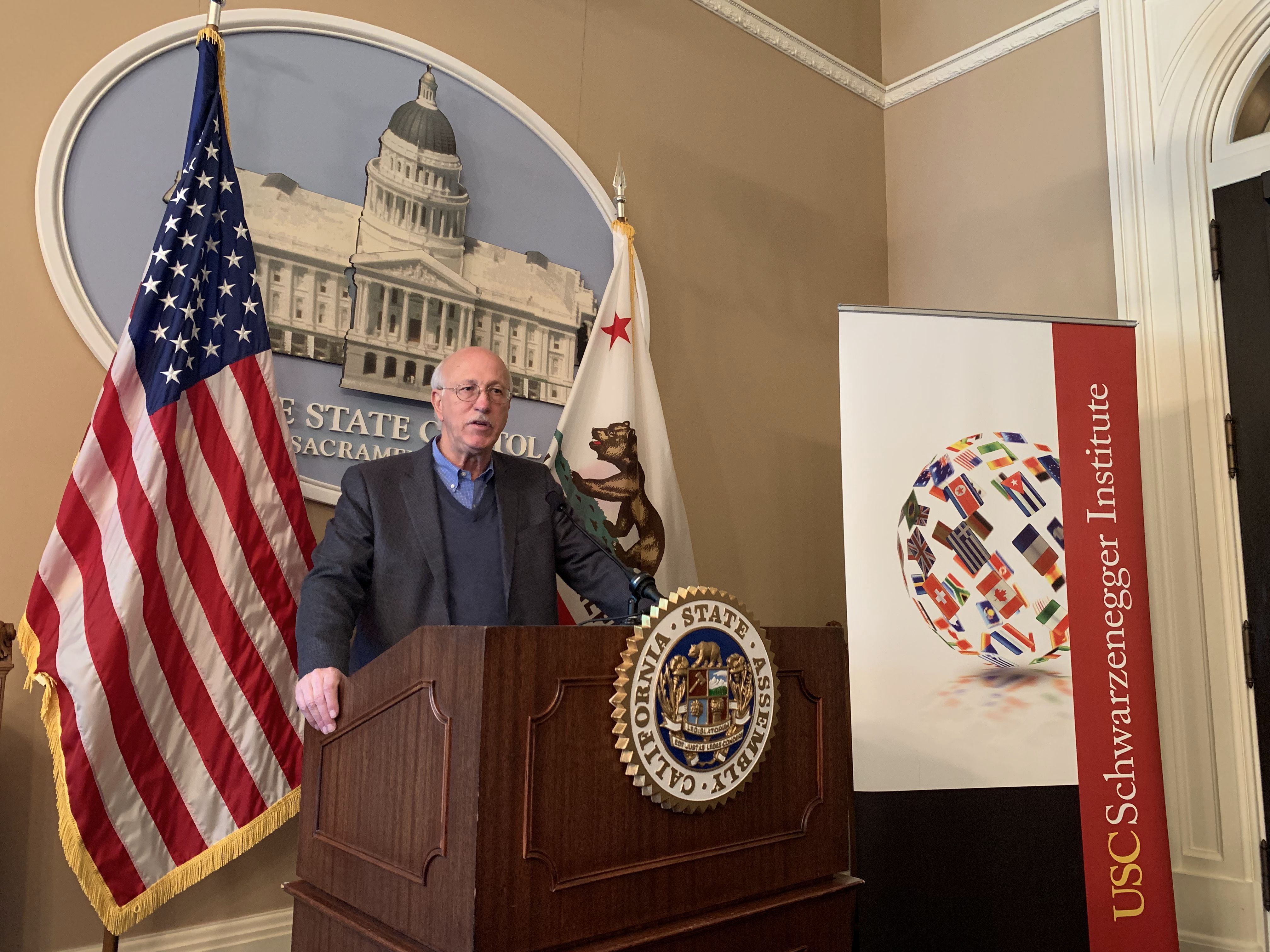Professor Adam Rose, accompanied by Professor Christian Grose and Conyers Davis, visited the California State Capitol on March 13th to provide a legislative briefing on his latest research on the impacts of the Property Assessed Clean Energy (PACE) Program on the economies of Florida and California.
Earlier in the week the Schwarzenegger Institute, part of the University of Southern California’s Sol Price School of Public Policy, released Professor Rose’s comprehensive study highlighting the significant positive impacts of the PACE Program, including job creation, economic investment, energy savings, greenhouse gas emission reductions, and insurance savings. The PACE Program was established in California by Governor Arnold Schwarzenegger and the State Legislature in 2008 and is enabled by local governments. It provides low-cost, long-term financing for energy and hazard resiliency improvements to residential and commercial properties that is both affordable and accessible, while including built-in consumer protections that are stronger than many other types of home improvement financing.
The study, “Impacts of the Property Assessed Clean Energy (PACE) Program on the Economies of California and Florida,” was conducted by USC Price School Research Professor Adam Rose and Research Associate Professor Dan Wei by performing a regional economic impact analysis of PACE financing by the nation’s leading PACE provider, Ygrene Energy Fund, between 2013 and mid-2018. USC’s findings account for a significant fraction of the total PACE market, and highlight the positive impacts on a range of economic, energy and environmental indicators, including:
– Job creation: Ygrene PACE financing to date is projected to create more than 21,000 new job-years of employment in the two major states in which Ygrene operates — California and Florida, including approximately 10,000 new job-years in California.
– Business activity: Ygrene PACE investments in communities across California and Florida have grown and will grow local economies by more than $1.2 billion in terms of Gross Domestic Product (GDP), including more than $660 million in California. Including the value of environmental benefits in a measure of Augmented (or Green) GDP, the total is more than $1.6 billion, including nearly $850 million in California.
– Energy savings: In California, over the useful life of improvements, PACE is on track to directly reduce electricity consumption by more than 3.6 million megawatt hours, natural gas consumption by more than 2.8 billion cubic feet and water consumption by more than 2.3 billion gallons.
– Reduced GHG emissions: Ygrene PACE improvements are projected to directly reduce greenhouse gas emissions in California by more than 1.1 million metric tons since its inception.
More than 70% of the economic gains come about during the investment period, 2013-18, with the remainder stemming from savings on utility bills and avoided losses from disasters over the useful life of the property improvements. The energy and environmental gains are spread evenly over the entire period of analysis, 2013 to 2067.
“In addition to the direct benefits of PACE financing, which are rather straightforward, we also examined the indirect benefits of PACE. We utilized principles of Benefit-Cost Analysis (BCA) and the leading macroeconometric model (REMI Policy Insight Plus) to determine our findings,” said Professor Rose. “As states and communities look to build more resilient communities and meet both their environmental and economic goals, it’s clear PACE is a valuable public policy tool.”
PACE programs have broadened significantly in recent years from their original emphasis on improving energy efficiency and promoting renewable energy, and now also include financing for saving water and reducing vulnerability to disasters for both residential and commercial properties. It achieves its direct societal objectives while providing economic gains to financing recipients. The program does so by reducing utility bills, saving on disaster insurance premiums, preventing business interruption, and preventing the need for building repairs or reconstruction following a natural disaster. In addition, PACE financing is more accessible to some who could not otherwise secure financing through more conventional lending-related instruments.

